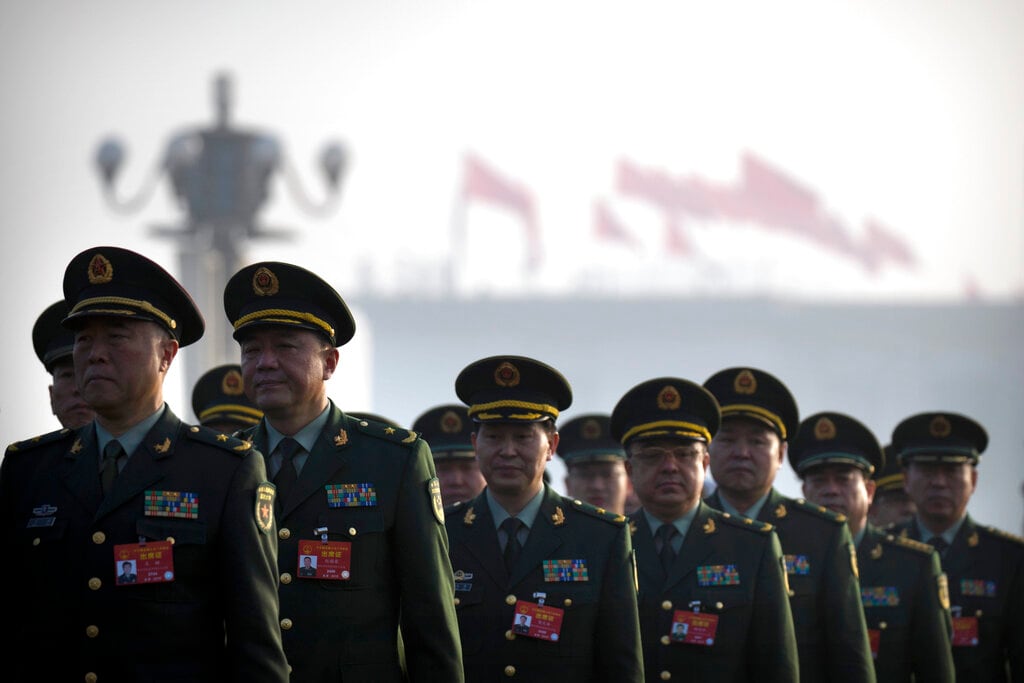This is the first of a two-part series on Marine Corps information warfare.
To keep up with the changing nature of war and in response to nations such as China and Russia restructuring their militaries around a consolidated information warfare discipline, senior leaders at the Navy and Marine Corps recently said they are looking to boost their own prowess in that area.
Adm. Michael Gilday, the chief of naval operations, described in a new strategy document released Dec. 4 how he wants to build out a new dedicated information warfare cell within fleet maritime operations centers. The results from exercises, scheduled to be held in 2020, will refine requirements and timelines for these cells as part of the budgeting process for fiscal 2022.
It is still unclear exactly what these cells will do or how they’ll be staffed.
In addition, the new commandant of the Marine Corps issued planning guidance this fall that calls for greater overall naval integration, acting more of an extension of the Navy versus a second land Army. This integration extends to the information warfare realm as well.
“The Navy has an [information warfare] implementation plan. We’re about four meetings into turning that into a naval IW implementation plan,” Lt. Gen. Lori Reynolds, the Marine Corps’ deputy commandant for information, said in October. “We are looking at what our staffs need to look like at the fleet level, at the [Marine Expeditionary Unit] level or the [Amphibious Ready Group]/MEU level.”
Reynolds noted that the partnership with the Navy for a more integrated naval force comes down to power projection.
“How can we, the United States Marine Corps, help contribute to the mission of the Navy to assure freedom of the seas, project power, enable sea control, provide access in highly contested and informationalized environments?” she asked. “This is a different mindset and it requires different thinking. This thinking there is the enormous potential to deter, to enable allies and partners, to maneuver, and to frustrate the adversary’s understanding.”
The Navy is playing a significant role in confronting China in the Pacific. China, according to scholars and government intelligence reports, has begun creating an informationized military reorganizing its forces to house cyber, electronic warfare, C4ISR systems, space and information under a single entity. Moreover, for years, China has increasingly seized international waters for its own artificial islands and in turn used them to increase how they project power. These islands allow China to extend its capabilities, to include electronic collection capabilities as well as missile capabilities, farther from its actual territorial shores.
RELATED

The Marines will play a part in this effort to confront China in the Pacific given the commandant’s drive for greater naval integration.
Under the Marine’s information warfare construct and with new guidance from the commandant, a Marine official told C4ISRNET that they are tasked with integrating with the Navy’s distributed maritime operations concept.
Navy officials described that concept this fall.
“Information warfare is the foundation of distributed maritime options,” Rear Adm. Steven Parode, director of the warfare integration directorate, inside the N2/N6, office of the chief of naval operations, said in October. “This year we’ve been closely integrating with the United States Marine Corps to bind together more closely their concepts for information operations and operations in the information environment with information warfare in the United States Navy so we can take advantage of the capabilities and the intensity that the Marines bring to a maritime fight.”
Specifically, the Navy hopes the closer relationship will help in its sea denial mission, which aims to prevent China’s unencumbered use of the water.
Moreover, this change will affect the Marines new information units, the Marine Expeditionary Force Information Groups, which are the focal points for all information warfare capabilities within the expeditionary force.
“How does the MIG, MEF Information Group, plug into the [Navy] information warfare command,” Col. Scott Stebbins, director of the information warfare integration division at the capabilities development directorate within the deputy commandant for combat development and integration, asked in September.
That’s a question Marine Corps leaders are continuing to work through.
Mark Pomerleau is a reporter for C4ISRNET, covering information warfare and cyberspace.








